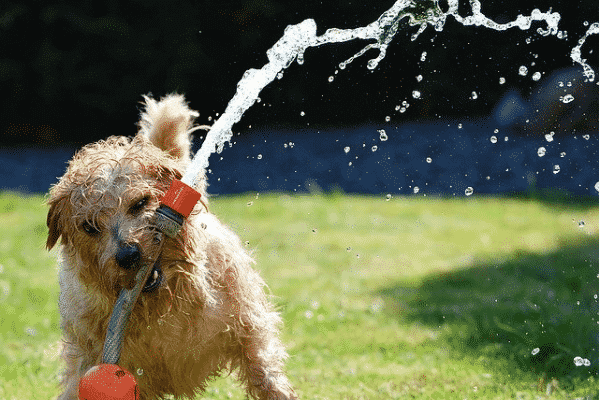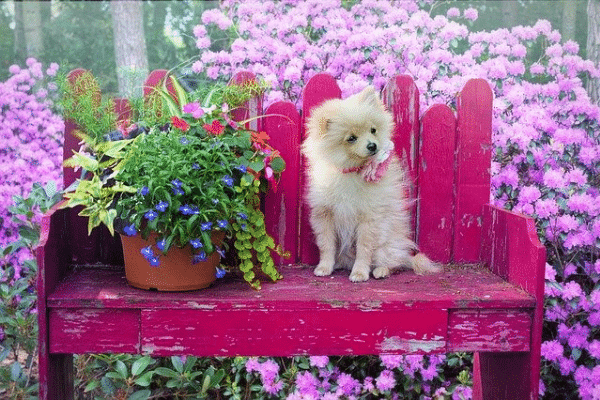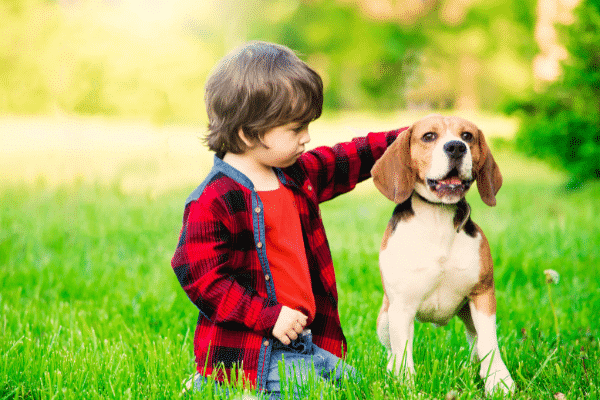Wherever you are at your pet journey – owning a pet or about to own one – this article will help you think about space for dogs to play, sleep and eat. Our four-legged friends are part of our family, and we go to lengths to make them feel comfortable inside our homes, and we should be doing the same outdoors as well.
Secure your boundary
When you decide to bring home a pet, the first thing to do is to secure your yard. Make sure there are no gaps below the fence – if there are, then add a chicken wire mesh or barriers so that your dog is safe in your yard, roaming happily around.
The other areas you need to secure inside your yard are your garden beds and veggie patch. Have a higher garden edging or raised bed which deters your canine friend from venturing in.
Dig zone
Some habits cannot be changed – it’s in the nature of the dog to dig. The yard with potholes, though, may not be the most appealing scene! The best way to tackle this is by providing a space for your dog to dig. How about a small sand pit with doggy treats?
Reduce lawn size
Kids and dogs love a lawn to run around in and roll over. Dog urine however doesn’t agree with your lawn – you must either hose it down immediately or the smell will permeate strongly throughout the yard and ruin the lawn. While you’re at work, this is next to impossible.

Clever ways to deal with this issue include either to remove or reduce lawn area, put in paved pathways interwinding your garden beds, and planting shade trees to rest and play. If you have a shaded area in your yard, artificial lawn could be one solution but then again if you don’t clean them regularly, you must deal with a smelly yard. If you can’t ditch your lawn, then dog rocks added to their water bowl could be another solution.
Cool spot to flop in the heat
To cope with summer heat, every dog needs a space to cool off. A shade tree in your yard could be an ideal place for them to flop down when the sun is high up. Place a water bowl in the shaded part of the area. Some bones to chew and toys to play will keep them occupied for a while. Some trees for small to medium sized gardens are deciduous trees like Lagerstroemia (Crepe Myrtle), Plumeria (Frangipani), Pyrus (Ornamental Pear) and Tibuochina (Tibuochina) and Gleditsia tricanthos (Honey Locust). Evergreens like Magnolia (Magnolia), Corymbia ficifolia ‘Summer Red’ (Flowering Gum) are great too.
Potty area
When you are tied up with meetings and deadlines at work, it is impossible to schedule a time to take your dog for a walk to do their business. Times like these, a dedicated small space with a small vertical post or a mulch area might be ideal for them to do their business without interrupting you. A puppy needs to be trained to use that space, which will then help you to protect your lawn and save your time.

Groundcover
You know what you would like to feel on your soles if you were barefoot in the garden – no sharp stones or gravel, right? That’s what you want for your dog then – yes to smooth stones and pebbles and mulches, no to industrial waste and harsh chemicals.
Keep the pebbles large in size, as some smaller sized pebbles can get into dogs paws. Perhaps a combination of stone and pebbles, or pavers and pebbles, would be ideal for garden pathways.
Plants to consider and avoid
All plants don’t suit our canine friends – some are good, and some can be poisonous when ingested accidentally. Low level shrubs and ground covers must therefore be carefully chosen. Here are some plants you could consider:
Thyme spp (Thyme), Stachys byzantine (Lamb ‘s Ears), Salvia (Sage), Succulents, Menta pulegium (Pennyroyal), Melissa officinalis (Lemon balm), mint, oregano, rosemary.

Equally, while planning your garden, you might want to ensure your choice of plant is not harmful to your pet. Some plants you’re better off avoiding are:
Cycas and Zamia species (Sago palm), Nerium oleander (Oleander), Cordyline australis (Palm Lily), Narcissus spp (Daffodils), Hyacinthus orientalis (Hyacinth), Kalanchoe blossefediana (Kalanchoe), Brunfelsia pauciflora (Yesterday-today-and-tomorrow) and Macadamia integrifolia (Macadamia nut).
With some research and clever designing you can create a yard that is low maintenance and pet and family friendly. Wishing you a harmonious life with your canine friend!
READ ALSO: Recycled garden: Jugaad in action
Link up with us!
Indian Link News website: Save our website as a bookmark
Indian Link E-Newsletter: Subscribe to our weekly e-newsletter
Indian Link Newspaper: Click here to read our e-paper
Indian Link app: Download our app from Apple’s App Store or Google Play and subscribe to the alerts
Facebook: facebook.com/IndianLinkAustralia
Twitter: @indian_link
Instagram: @indianlink
LinkedIn: linkedin.com/IndianLinkMediaGroup




